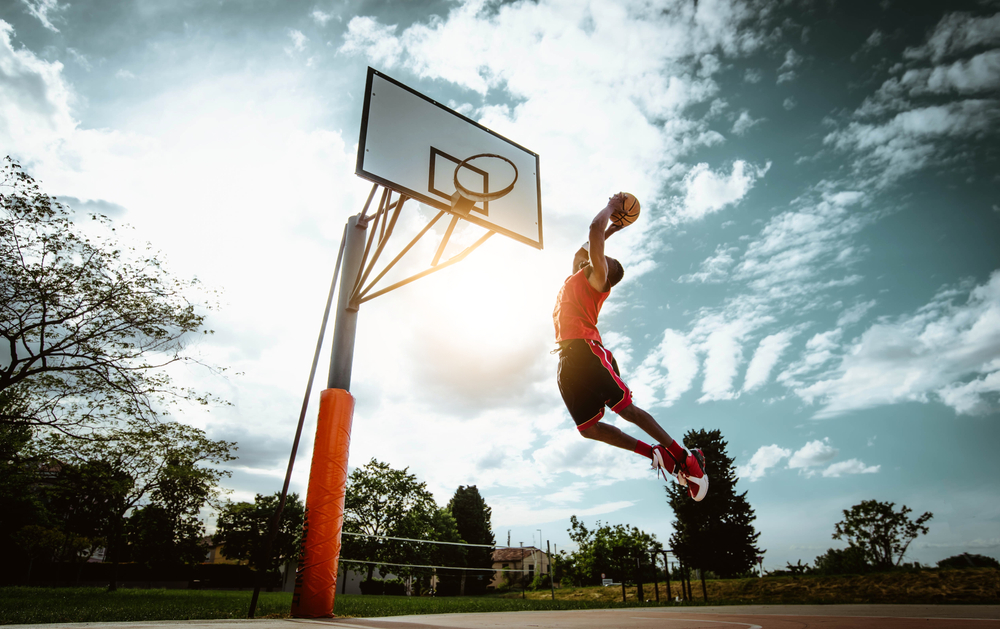Basketball is a high-intensity sport that demands quick movements, sudden stops and explosive jumps. These dynamic actions place significant stress on your muscles and tendons — especially your Achilles tendon. Stretching before hitting the court can be a game changer, helping to prevent injuries and enhance your performance. In this article, we’ll explore why stretching is crucial for basketball players and how it specifically protects your Achilles tendon.
Understanding the Achilles tendon
The Achilles tendon is the largest and strongest tendon in your body, connecting your calf muscles to your heel bone. This tendon plays a pivotal role in virtually every movement involving your feet and legs, from walking to running and jumping. Given its importance, any injury to the Achilles tendon can be debilitating, sidelining athletes for weeks or even months.
Achilles tendon injuries are common among basketball players due to the sport’s physical demands. These injuries can range from minor strains and tendinitis to severe ruptures that require surgery and extensive rehabilitation. Therefore, taking preventive measures is vital, and stretching is one of the most effective ways to protect this crucial tendon.
The importance of stretching
Stretching before engaging in any physical activity prepares your muscles and tendons for the demands they are about to face. For basketball players, this means enhancing flexibility, improving range of motion and increasing blood flow to the muscles. Here are the key reasons why stretching is essential:
- Increases flexibility: Flexible muscles and tendons are less likely to suffer strains and tears. Stretching helps elongate the muscle fibers, making them more pliable and less prone to injury.
- Enhances range of motion: A good stretching routine improves your joints’ range of motion, allowing you to move more freely and efficiently on the court. This is particularly important for basketball players, who need to execute a wide variety of movements quickly.
- Improves circulation: Stretching increases blood flow to your muscles, delivering essential nutrients and oxygen. This helps your muscles perform better and recover faster after intense physical activity.
- Reduces muscle tension: Stretching helps relax tight muscles, reducing the risk of strains and injuries. For basketball players, this means fewer chances of developing issues like tendinitis or muscle pulls.
How stretching protects the Achilles tendon
When it comes to the Achilles tendon, stretching plays a crucial role in maintaining its health and preventing injuries. Here’s how:
1. Reduces the risk of tendinitis
Achilles tendinitis is a common condition among athletes, characterized by inflammation and pain in the tendon. Stretching helps prevent tendinitis by keeping the calf muscles and Achilles tendon flexible and less prone to overuse injuries.
2. Prevents tendon strains
Sudden, explosive movements in basketball can place excessive stress on the Achilles tendon, leading to strains or even ruptures. Regular stretching strengthens the tendon and makes it more resilient to these high-impact forces.
3. Improves muscle balance
Imbalances between the calf muscles and other muscles in the leg can increase the risk of Achilles tendon injuries. Stretching helps maintain muscle balance by ensuring all the muscles involved in movement are properly conditioned and flexible.
4. Enhances proprioception
Proprioception is your body’s ability to sense its position and movements. Stretching improves proprioception, helping you move more efficiently and reducing the likelihood of awkward landings or movements that could strain the Achilles tendon.
Effective stretches for basketball players
To maximize the benefits of stretching for your Achilles tendon, it’s essential to include specific exercises in your routine. Here are some effective stretches that basketball players should incorporate:
1. Calf stretches
Calf stretches are crucial for maintaining flexibility in the muscles connected to the Achilles tendon. Here are two effective calf stretches:
- Standing calf stretch: Stand facing a wall with one foot forward and the other foot back. Keep both feet flat on the ground and lean forward, bending your front knee while keeping your back leg straight. Hold for 30 seconds and switch legs.
- Seated calf stretch: Sit on the ground with your legs extended in front of you. Loop a towel or resistance band around the ball of one foot and gently pull it towards you while keeping your knee straight. Hold for 30 seconds and switch legs.
2. Achilles tendon stretch
- Standing Achilles stretch: Stand on a step with the balls of your feet on the edge and your heels hanging off. Slowly lower your heels below the step level, feeling a stretch in your Achilles tendons. Hold for 15-20 seconds and then raise your heels back up. Repeat several times.
3. Dynamic stretches
Dynamic stretches involve moving parts of your body and gradually increasing reach, speed of movement or both. These stretches are excellent for warming up before a game:
- Leg swings: Stand on one leg and swing the other leg forward and backward, gradually increasing the range of motion. Repeat 10-15 swings on each leg.
- Walking lunges: Step forward with one leg and lower your hips until both knees are bent at about a 90-degree angle. Push off your front leg to return to standing and repeat on the other leg. Perform 10-12 lunges on each leg.
Creating a pregame stretching routine
To fully benefit from stretching and protect your Achilles tendon, it’s essential to create a comprehensive pre-game routine. Here’s a sample routine that basketball players can follow:
- Warm-up: Start with a light jog or some jumping jacks to get your blood flowing and muscles warm.
- Dynamic stretches: Perform leg swings and walking lunges to prepare your muscles for the movements they’ll encounter during the game.
- Static stretches: Incorporate the standing calf stretch, seated calf stretch and standing Achilles stretch into your routine. Hold each stretch for 30 seconds and repeat on both sides.
- Cool-down: After the game, perform static stretches again to help your muscles recover and reduce soreness.
Why stretching is vital before playing basketball
Stretching before basketball is not just a routine — it’s a vital part of injury prevention, especially for your Achilles tendon. By increasing flexibility, enhancing range of motion, improving circulation and reducing muscle tension, stretching helps keep your Achilles tendon healthy and resilient. Incorporate effective stretches like calf stretches, Achilles tendon stretches and dynamic stretches into your pregame routine to safeguard against injuries and improve your performance on the court. Remember, a few minutes of stretching can make a significant difference in keeping you playing your best and staying injury-free.
This story was created using AI technology.
















